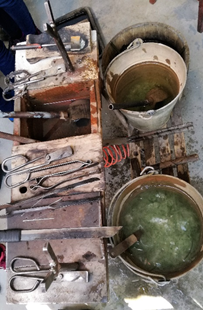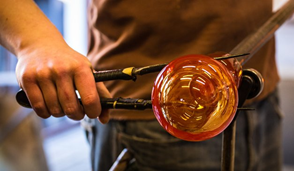History

The history of glass making dates back to at least 5 500 years ago in Egypt. The oldest product was probably a glass pearl in a pharaoh’s tomb. They were making glass with a clay core and a very strong glass thread around it. When it cooled down, they scraped the clay from the glass product.
In the Czech Republic people started making glass in the 13th century. It was usually a system of three glass furnaces protected with wooden covers. Glassworks are usually in mountainous areas with a sufficient quantity of wood. The oldest glassworks were in Krušné hory, Lužické hory, Orlické hory and on Šumava mountains.
There are two types of glass: forest (green) and normal (clear) glass. People made green glass in forests because there was enough wood to heat the furnace up. Forest glass is green because it is contaminated with sand.
Today´s production in the Czech Republic

Nowadays there are only a few small glassworks in the Czech Republic because of big industrial factories with global production. There are also factories which produce glass with inferior quality, but it´s cheaper so people buy it more.
Manufacturing

The main ingredients are silica sand, soda and limestone. The glass smelts from 1 200 °C to 1 480 °C in the smelting furnace for 15 hours. The smelting furnace is made of fireclay bricks and it takes 7-9 days to heat it up. The temperature on the glass surface is 800 °C and inside it´s 1 000 °C. Then the glassblower shapes the glass by blowing into a glassblowing pipe. He puts it into a mould made of beech wood and then cools it down with compressed air. He puts it into a cooling furnace for 7 hours. During the process of glass-making the remains some leftover glass. This can be recycled and used again. Glass products can have different shapes and colours by adding copper, cobalt, nickel, uranium etc. It takes 10 minutes to make one drinking glass. To learn how to work with glass you need ten years of training.